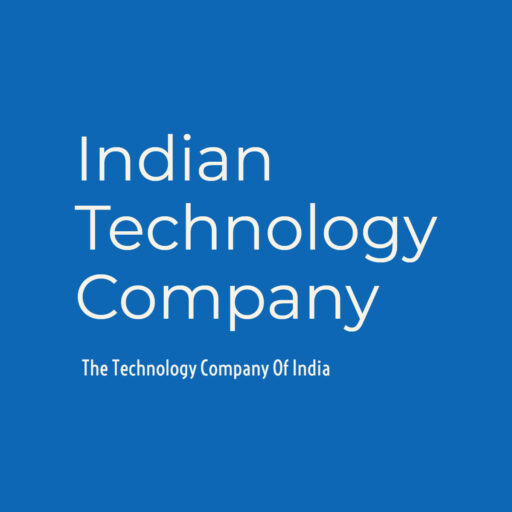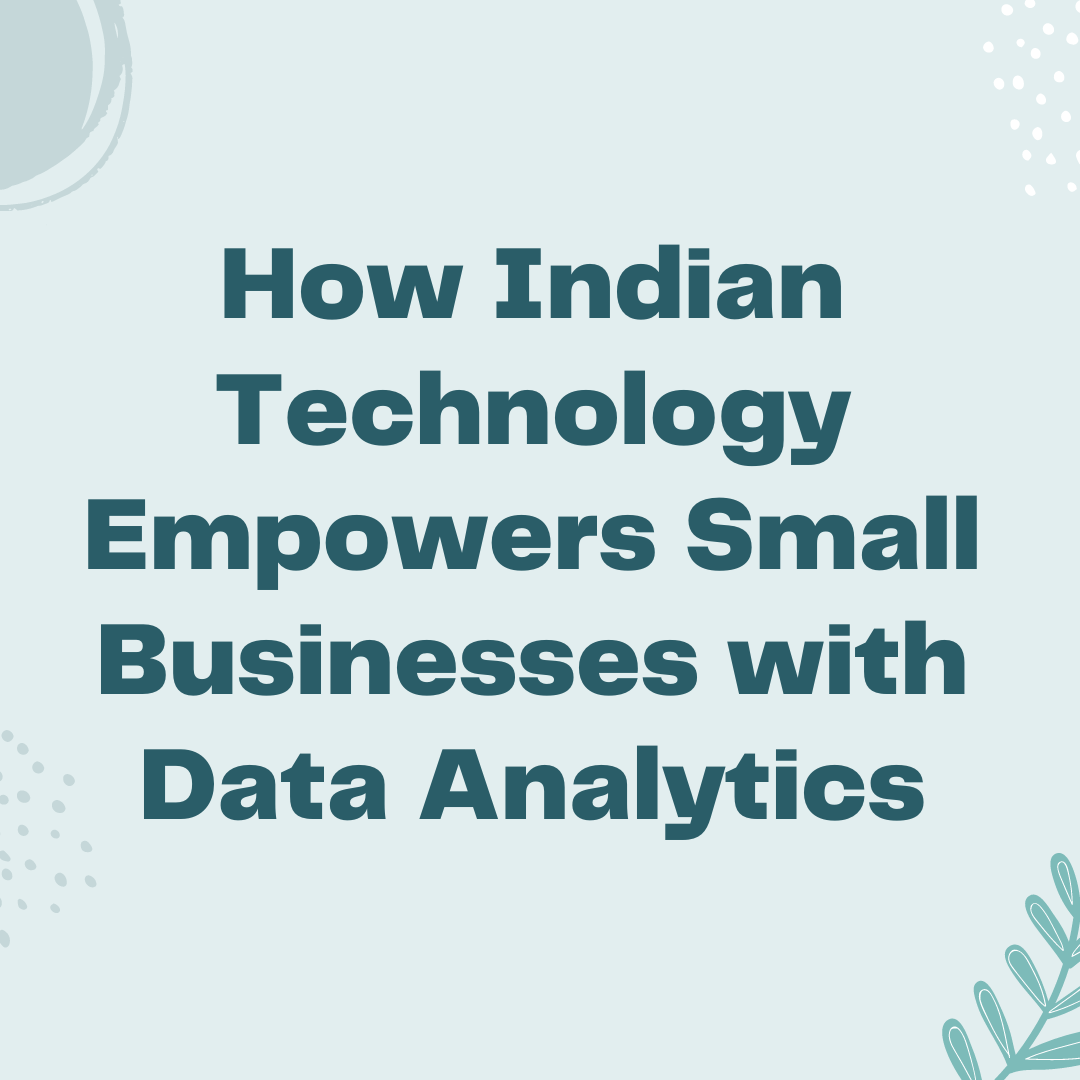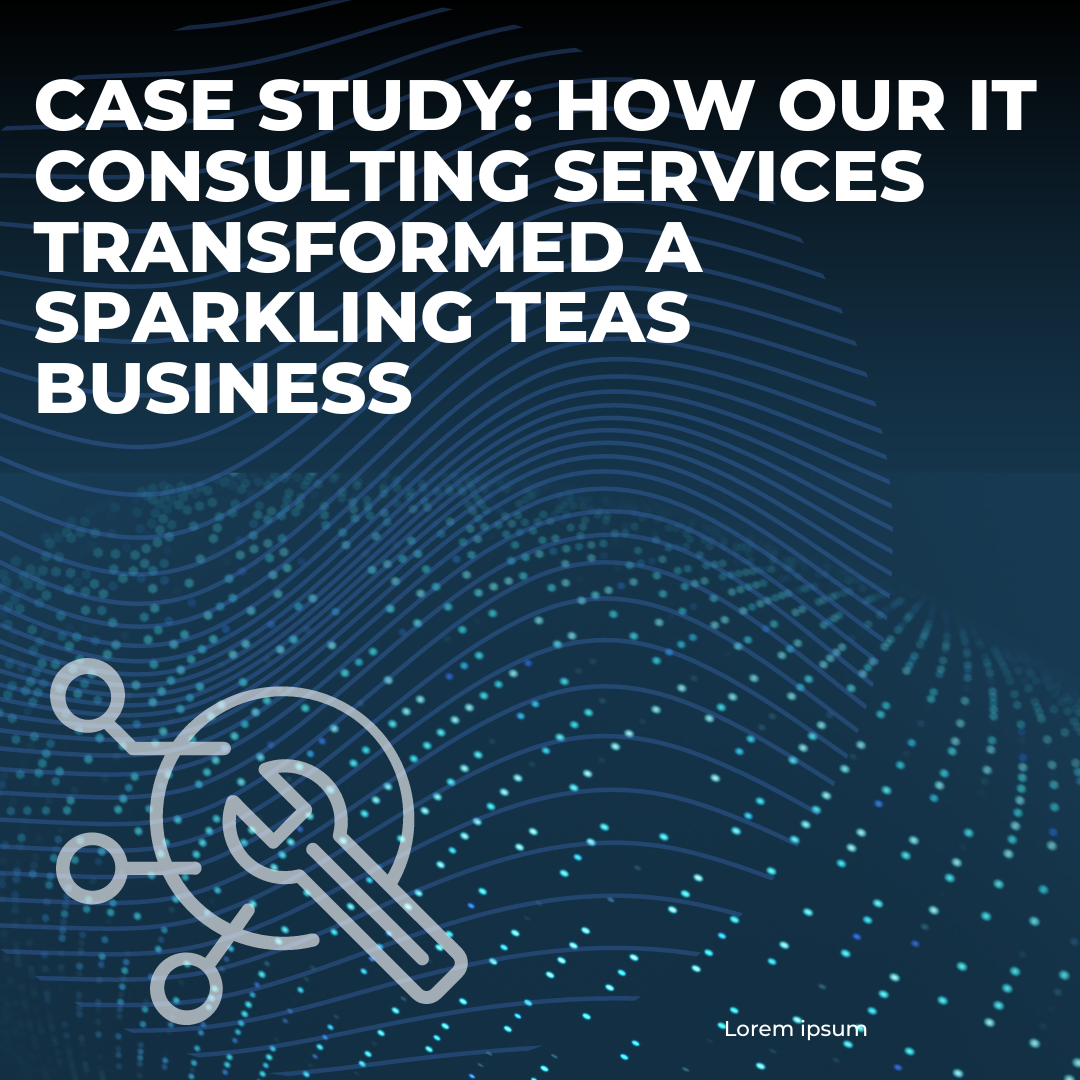In today’s digital landscape, businesses are increasingly dependent on efficient, integrated systems to drive productivity, streamline operations, and foster sustainable growth. Enterprise Resource Planning (ERP) systems serve as a transformative tool, combining core business processes into a unified platform. Indian Technology Company has positioned itself as a leader in ERP solutions, offering tailor-made implementations that meet unique client needs. This article delves into how Indian Technology Company has successfully implemented ERP solutions and highlights the benefits clients have experienced as a result. Understanding ERP and Its Importance ERP systems integrate various functions—such as finance, human resources, inventory, procurement, and customer relations—into a single platform. This consolidation allows companies to automate processes, improve data accuracy, and gain real-time insights across departments. The importance of ERP cannot be overstated; it eliminates silos, reduces redundancies, and empowers decision-makers with data-driven insights, which are crucial for achieving operational efficiency. Indian Technology Company’s Approach to ERP Solutions Indian Technology Company follows a structured, client-centric approach to ERP implementations. This approach is characterized by: Customization: Every business is unique, and Indian Technology Company recognizes that. ERP solutions are customized to meet the distinct needs of each client, ensuring a perfect fit. Comprehensive Planning: Before implementing the system, the company conducts a thorough analysis of the client’s business processes, identifying bottlenecks, inefficiencies, and opportunities for improvement. Collaborative Development: Indian Technology Company involves key stakeholders in the design process, incorporating their insights to shape a solution that aligns with their workflow. Seamless Integration and Training: The transition to a new system is managed meticulously, with Indian Technology Company ensuring minimal disruption. Training sessions are provided to help employees adapt to the new system. Case Studies: How Clients Have Benefited from ERP Implementations 1. Client Success in the Manufacturing Industry A leading manufacturing company faced challenges with inventory management and production tracking. The lack of integration between departments led to frequent delays, excess inventory, and operational inefficiencies. Indian Technology Company stepped in to design and implement a customized ERP solution. Benefits: Streamlined Inventory Management: The ERP system allowed real-time tracking of raw materials and finished goods, reducing excess inventory by 25%. Improved Production Efficiency: Automated workflows reduced manual entry, decreasing production errors by 30%. Enhanced Decision-Making: Managers gained access to real-time production data, enabling quicker and more informed decisions. The manufacturing client saw an immediate improvement in efficiency and cost savings, translating into a 20% increase in profitability within the first year of ERP implementation. 2. Retail Sector Transformation through ERP Integration A prominent retail chain struggled with managing multiple storefronts, tracking sales, and coordinating inventory across locations. Indian Technology Company provided an ERP solution tailored for retail, integrating sales, inventory, and customer relationship management (CRM). Benefits: Optimized Inventory Levels: With centralized inventory data, the client reduced stockouts and overstocking, leading to a 15% decrease in inventory costs. Enhanced Customer Insights: The CRM module enabled a better understanding of customer preferences, helping the retail chain tailor promotions and improve customer satisfaction. Boosted Sales Efficiency: Sales data integration allowed for real-time analytics on store performance, aiding in strategic planning and targeted marketing efforts. Following ERP implementation, the retail client achieved a 30% increase in customer retention and a 15% boost in revenue due to improved inventory and customer management. 3. Finance Sector Efficiency with ERP for Banking and Accounting A financial services provider sought to improve compliance tracking, financial reporting, and client management. Indian Technology Company implemented an ERP system that centralized financial records, streamlined reporting, and enhanced compliance capabilities. Benefits: Accurate Financial Reporting: The ERP system automated financial data consolidation, reducing errors and saving significant time during audits. Enhanced Compliance: With built-in compliance checks, the client reduced regulatory risks, boosting confidence in their reporting and operations. Improved Client Management: Integration of CRM with ERP allowed for seamless communication and tracking of client interactions, improving service quality. By automating financial processes and centralizing data, the finance client achieved a 20% reduction in operational costs and witnessed smoother audit processes. 4. Healthcare Sector Efficiency through ERP Implementation A healthcare provider, operating multiple clinics, required a unified system to manage patient records, billing, and inventory. Indian Technology Company developed a specialized ERP solution with modules for patient management, billing, and inventory. Benefits: Improved Patient Experience: Centralized patient records allowed for quick access to medical histories, enhancing patient care. Efficient Inventory Management: Medical supplies and pharmaceuticals were tracked in real-time, reducing waste and ensuring timely reordering. Automated Billing and Claims Processing: Billing and claims processes were streamlined, resulting in faster claim settlements and reduced administrative burden. This ERP implementation led to a 25% increase in operational efficiency and a 20% improvement in patient satisfaction scores, positioning the healthcare client as a leader in patient care. Key Features of Indian Technology Company’s ERP Solutions The success stories highlight several core features that make Indian Technology Company’s ERP solutions effective: Modular Design: Clients can choose modules specific to their industry or operational needs, ensuring that they only pay for what they use. Scalability: The ERP systems are scalable, allowing clients to add new features or expand their system as their business grows. User-Friendly Interface: Designed for ease of use, the ERP solutions enable employees with varying technical expertise to quickly adapt to the system. Advanced Security: Indian Technology Company prioritizes data security, incorporating multi-layered security protocols to safeguard sensitive business information. Data Analytics and Reporting: The ERP solutions offer comprehensive reporting tools, enabling clients to make data-driven decisions and stay competitive. Why Choose Indian Technology Company for ERP Solutions? Indian Technology Company stands out due to its client-focused approach, commitment to quality, and expertise in diverse industries. Here’s why businesses trust them for ERP solutions: Proven Track Record: With a portfolio of successful ERP implementations, Indian Technology Company has demonstrated its capability to deliver results. Industry Expertise: The company’s understanding of various sectors, including manufacturing, retail, finance, and healthcare, enables it to create industry-specific solutions. Dedicated Support: Indian Technology Company offers robust post-implementation support, ensuring that clients get the most out of their ERP
Lessons Learned from Implementing a Major IT Project
Implementing a major IT project is a complex and challenging endeavor. The lessons learned from these experiences are invaluable for ensuring future success. Here are some key insights gained from such projects: Thorough planning is essential before diving into implementation. This involves defining the project’s scope, setting clear objectives, and outlining the steps needed to achieve these goals. Comprehensive planning helps in anticipating potential challenges and devising strategies to address them. Involving all stakeholders, including end-users, management, and IT staff, in the planning process is crucial. Their input can provide valuable insights and help in aligning the project with business needs and expectations. Establishing clear communication channels is vital for the success of an IT project. Regular updates and transparent communication can help in managing expectations and keeping everyone on the same page. Maintaining detailed documentation of all project activities, decisions, and changes serves as a reference point and ensures that everyone involved has access to the same information. Identifying potential risks early in the project lifecycle allows for better preparation and mitigation strategies. Common risks include technical challenges, budget overruns, and timeline delays. Developing contingency plans to address potential risks is important. Having backup plans can help in minimizing the impact of unforeseen issues and keeping the project on track. Ensuring that the project has adequate resources, including skilled personnel, technology, and budget, is crucial. Under-resourcing can lead to delays and compromised quality. Providing necessary training and support to the project team helps in enhancing their skills and ensuring they are well-equipped to handle their responsibilities. Adopting an agile methodology can be beneficial in managing IT projects. Agile allows for flexibility and adaptability, enabling teams to respond to changes and feedback quickly. Implementing the project in small, manageable iterations allows for continuous improvement and early identification of issues. This approach helps in delivering incremental value and reduces the risk of major failures. Integrating continuous testing and quality assurance practices throughout the project lifecycle is essential. Regular testing helps in identifying and resolving issues early, ensuring the final product meets the required standards. Conducting user acceptance testing (UAT) to gather feedback from end-users ensures that the system meets their needs and expectations, leading to higher satisfaction and adoption rates. Implementing a major IT project often involves significant changes in processes and systems. Effective change management strategies are crucial to help stakeholders adapt to these changes smoothly. Providing comprehensive training and clear communication about the changes helps in reducing resistance and ensuring a smoother transition. Conducting a post-implementation review to evaluate the project’s outcomes against its objectives is important. This helps in identifying what went well and areas for improvement. Documenting the lessons learned from the project and sharing them with the organization can be invaluable for future projects, helping to avoid past mistakes and replicate successes. Implementing a major IT project is a complex process that requires careful planning, effective communication, and a focus on quality. By learning from past experiences and applying these lessons, organizations can improve their project management practices and increase the likelihood of successful outcomes. These lessons highlight the importance of detailed planning, risk management, resource allocation, agile methodology, quality assurance, change management, and post-implementation review in achieving project success. Top of Form
How Indian Technology Empowers Small Businesses with Data Analytics
Unlocking Growth: How Indian Technology Empowers Small Businesses with Data Analytics Introduction In the rapidly evolving business landscape, data has emerged as a critical asset. For small businesses in India, leveraging data analytics can be a game-changer, enabling them to unlock new growth opportunities and enhance their competitive edge. This article explores how Indian technology is empowering small businesses with data analytics, the benefits they derive, and the challenges they face in this transformative journey. The Role of Data Analytics in Small Businesses Data analytics involves the process of examining raw data to draw meaningful insights and make informed decisions. For small businesses, data analytics can provide a deeper understanding of customer behavior, market trends, and operational efficiencies, driving growth and innovation. Key Ways Indian Technology is Empowering Small Businesses Accessible Analytics Platforms Affordable Solutions Indian technology companies have developed cost-effective data analytics platforms tailored to the needs of small businesses. These platforms offer a range of functionalities, from basic data visualization to advanced predictive analytics, at a fraction of the cost of traditional enterprise solutions. User-Friendly Interfaces Recognizing that small business owners may not have extensive technical expertise, Indian tech firms have focused on creating user-friendly interfaces. These platforms allow users to easily input data, generate reports, and visualize insights without requiring advanced technical skills. Cloud-Based Analytics Scalability and Flexibility Cloud-based analytics solutions offer small businesses the flexibility to scale their data operations as they grow. Indian providers such as Zoho Analytics and Freshworks offer cloud-based tools that can be accessed from anywhere, making it easier for businesses to manage their data needs. Cost-Efficiency By leveraging cloud infrastructure, small businesses can avoid the high upfront costs associated with traditional on-premise systems. Instead, they can opt for subscription-based models that align with their budget constraints. Integration with Existing Systems Seamless Integration Indian tech companies understand the importance of integrating data analytics tools with existing business systems. Platforms are designed to seamlessly integrate with popular accounting software, customer relationship management (CRM) systems, and e-commerce platforms, ensuring a smooth flow of data. API Connectivity Application Programming Interfaces (APIs) provided by these platforms allow small businesses to connect various data sources, facilitating a comprehensive view of their operations and enabling more accurate analysis. Benefits of Data Analytics for Small Businesses Enhanced Decision-Making Data analytics enables small business owners to make informed decisions based on actual data rather than intuition. This leads to more accurate forecasting, better inventory management, and optimized pricing strategies. Improved Customer Insights By analyzing customer data, businesses can gain insights into purchasing patterns, preferences, and behaviors. This information can be used to personalize marketing efforts, improve customer service, and develop products that better meet customer needs. Operational Efficiency Data analytics helps identify inefficiencies in business processes, allowing small businesses to streamline operations and reduce costs. For example, analyzing supply chain data can reveal bottlenecks and areas for improvement. Competitive Advantage Small businesses that leverage data analytics can gain a competitive edge by being more agile and responsive to market changes. They can quickly adapt to new trends, identify emerging opportunities, and mitigate risks. Challenges in Adopting Data Analytics Data Quality and Management Ensuring the quality and accuracy of data is a significant challenge. Small businesses need to establish robust data management practices to clean, validate, and maintain their data. Skills Gap While user-friendly platforms exist, there is still a need for basic data literacy among small business owners and employees. Training and education are essential to maximize the benefits of data analytics. Privacy and Security Concerns With the increasing reliance on data, ensuring data privacy and security is paramount. Small businesses must implement adequate security measures to protect sensitive information from breaches and comply with regulations.
Harnessing Big Data for Predictive Analytics in Healthcare
Introduction In the era of digital transformation, healthcare is increasingly embracing technological advancements to enhance patient care, streamline operations, and reduce costs. One of the most promising developments is the utilization of big data for predictive analytics. By leveraging vast amounts of health-related data, predictive analytics can foresee health trends, improve clinical outcomes, and revolutionize the healthcare industry. This article explores how big data is harnessed for predictive analytics in healthcare, its benefits, challenges, and future prospects. Understanding Big Data in Healthcare Big data in healthcare refers to the extensive volumes of data generated from various sources, including electronic health records (EHRs), medical imaging, genomic sequencing, wearables, patient registries, and even social media. This data is characterized by its volume, velocity, variety, and veracity, making it both complex and rich in potential insights. The Role of Predictive Analytics Predictive analytics involves using statistical algorithms, machine learning techniques, and data mining to analyze historical data and make predictions about future events. In healthcare, predictive analytics can be used to: Predict Disease Outbreaks and Spread: By analyzing data from various sources, including public health records and social media, predictive analytics can forecast the likelihood and spread of disease outbreaks. This enables healthcare providers and policymakers to take proactive measures to contain and manage diseases. Personalize Treatment Plans: By integrating data from EHRs, genetic information, and patient histories, predictive analytics can help tailor treatment plans to individual patients, improving outcomes and minimizing adverse effects. Enhance Patient Monitoring and Management: Predictive models can identify patients at risk of developing chronic conditions or experiencing complications. This allows for timely interventions, personalized monitoring, and better management of diseases such as diabetes, heart disease, and cancer. Optimize Hospital Operations: Predictive analytics can forecast patient admissions, bed occupancy rates, and emergency department visits, enabling hospitals to optimize resource allocation, reduce wait times, and improve overall efficiency. Key Benefits of Predictive Analytics in Healthcare 1. Improved Patient Outcomes Predictive analytics enables healthcare providers to identify high-risk patients and intervene early, leading to better management of chronic diseases, reduced hospital readmissions, and improved overall patient outcomes. 2. Cost Reduction By predicting and preventing adverse events, hospital readmissions, and unnecessary treatments, predictive analytics can significantly reduce healthcare costs. Additionally, it helps in optimizing resource allocation, leading to cost savings. 3. Enhanced Clinical Decision-Making Predictive analytics provides clinicians with data-driven insights that support evidence-based decision-making. This enhances diagnostic accuracy, treatment efficacy, and patient safety. 4. Population Health Management By analyzing data on a large scale, predictive analytics helps in understanding health trends and patterns within a population. This aids in designing targeted public health interventions and policies to improve community health. Challenges in Implementing Predictive Analytics 1. Data Privacy and Security Handling sensitive health data comes with significant privacy and security concerns. Ensuring data protection and compliance with regulations like HIPAA (Health Insurance Portability and Accountability Act) is crucial. 2. Data Integration Integrating data from diverse sources, such as EHRs, wearables, and genomics, into a cohesive dataset is a complex task. Standardizing data formats and ensuring interoperability are major challenges. 3. Data Quality The accuracy and reliability of predictive analytics depend on the quality of data. Incomplete, inconsistent, or biased data can lead to erroneous predictions and ineffective interventions. 4. Technical Expertise Implementing predictive analytics requires specialized skills in data science, machine learning, and healthcare informatics. There is a growing need for trained professionals who can bridge the gap between data analysis and clinical application. Future Prospects The future of predictive analytics in healthcare looks promising, with advancements in technology and data science driving innovation. Here are some trends to watch: 1. Integration of AI and Machine Learning Artificial intelligence (AI) and machine learning (ML) are set to play a significant role in enhancing predictive analytics. Advanced algorithms can uncover complex patterns and provide more accurate predictions, leading to improved patient care. 2. Real-Time Analytics The adoption of real-time data analytics will enable healthcare providers to monitor patients continuously and intervene promptly. This is particularly beneficial for managing critical conditions and improving emergency response. 3. Expansion of Wearable Technology The proliferation of wearable devices and remote monitoring tools will generate vast amounts of real-time health data. Predictive analytics can leverage this data to offer personalized health insights and proactive interventions. 4. Precision Medicine Predictive analytics will be a cornerstone of precision medicine, where treatments are tailored to individual patients based on their genetic makeup, lifestyle, and environmental factors. This approach promises to enhance treatment efficacy and reduce adverse effects.
Case Study: How Our IT Consulting Services Transformed a Sparkling Teas Business
Introduction In the competitive landscape of the beverage industry, innovative solutions and efficient processes are paramount for success. This case study explores how our IT consulting services played a pivotal role in transforming a sparkling teas business, enhancing their operational efficiency, boosting sales, and significantly improving customer satisfaction. Background Sparkling Delights is a mid-sized company specializing in premium sparkling teas. Despite their unique product offerings and a growing customer base, they faced several challenges: Inefficient Inventory Management: Manual inventory tracking led to frequent stockouts and overstock situations. Limited Online Presence: Their website lacked e-commerce capabilities, limiting their reach to a broader audience. Disjointed Customer Relationship Management (CRM): Customer interactions and sales data were scattered across various platforms, making it difficult to provide personalized service. Operational Inefficiencies: Manual processes in order processing, billing, and reporting led to delays and errors. Objectives Sparkling Delights engaged our IT consulting services with clear objectives: Streamline Inventory Management: Implement an automated system to track inventory levels in real-time. Develop an E-commerce Platform: Create an online store to expand their market reach. Integrate a Unified CRM System: Centralize customer data to enhance relationship management and marketing efforts. Automate Operational Processes: Reduce manual intervention in order processing, billing, and reporting to improve efficiency and accuracy. Our Approach Our approach involved a comprehensive analysis of Sparkling Delights’ existing systems and processes, followed by the implementation of customized IT solutions. 1. Inventory Management System We implemented an advanced inventory management system that integrated with their existing ERP software. Key features included: Real-time Tracking: Automatic updates on inventory levels, reducing the risk of stockouts and overstocking. Supplier Integration: Seamless communication with suppliers for timely replenishment of stock. Analytics and Reporting: Detailed insights into inventory turnover rates, helping in better decision-making. 2. E-commerce Platform Development We developed a robust e-commerce platform tailored to their needs: User-friendly Interface: An intuitive design that enhanced the user experience. Secure Payment Gateway: Ensured safe and smooth transactions for customers. Mobile Optimization: A responsive design that provided a seamless shopping experience across devices. SEO and Marketing Tools: Integrated tools to enhance online visibility and drive traffic to the site. 3. Unified CRM System We centralized their customer data with a unified CRM system: Customer Profiling: Comprehensive customer profiles with purchase history and preferences. Targeted Marketing: Personalized marketing campaigns based on customer behavior and preferences. Enhanced Customer Service: Streamlined communication channels for better customer support and engagement. 4. Automation of Operational Processes We automated key operational processes to enhance efficiency: Order Processing: Automated order processing reduced the turnaround time and minimized errors. Billing and Invoicing: An automated billing system that ensured accurate and timely invoicing. Reporting and Analytics: Automated generation of reports provided real-time insights into sales, inventory, and customer behavior. Results The implementation of these IT solutions brought about significant improvements in various aspects of Sparkling Delights’ business: 1. Operational Efficiency Inventory Management: The real-time tracking system reduced stockouts by 30% and overstock situations by 25%. Order Processing: Automation reduced order processing time by 40%, enhancing customer satisfaction. 2. Increased Sales E-commerce Platform: The online store contributed to a 50% increase in sales within the first six months of launch. SEO and Marketing: Enhanced online visibility led to a 35% increase in website traffic and a 20% rise in new customer acquisitions. 3. Improved Customer Satisfaction Unified CRM: Personalized marketing and improved customer service led to a 25% increase in customer retention. Enhanced Support: Streamlined customer support processes improved response times and customer satisfaction ratings.
Revolutionizing Logistics: Bhagirati Carrying Corporation’s Digital Transformation Journey
Introduction In an age where technology is reshaping industries at an unprecedented pace, the logistics sector is no exception. Bhagirati Carrying Corporation (BCC), a leading player in the logistics industry, has embarked on a significant digital transformation journey. This article delves into the steps BCC has taken to revolutionize its operations, the challenges faced, and the benefits reaped from this transformation. The Need for Digital Transformation The logistics industry is traditionally known for its reliance on manual processes, paperwork, and human labor. While this approach has worked for decades, the growing demands for efficiency, accuracy, and speed in delivery have necessitated a shift towards digital solutions. BCC recognized the need to evolve to stay competitive and meet the changing expectations of its clients. Key Steps in BCC’s Digital Transformation Adopting Advanced Technologies Automation and Robotics BCC has integrated automation and robotics into its warehousing and distribution processes. Automated guided vehicles (AGVs) and robotic arms have replaced manual labor in sorting and moving goods, significantly increasing efficiency and reducing errors. Internet of Things (IoT) IoT devices have been deployed to monitor and track shipments in real-time. Sensors placed on cargo provide data on location, temperature, and humidity, ensuring that goods are transported under optimal conditions. This has been particularly beneficial for perishable items and pharmaceuticals. Artificial Intelligence (AI) and Machine Learning BCC utilizes AI and machine learning algorithms to optimize route planning and demand forecasting. These technologies analyze historical data and real-time conditions to suggest the most efficient routes and predict future demand patterns, enabling better resource allocation. Enhancing Customer Experience Digital Platforms BCC has developed a user-friendly digital platform where customers can book services, track shipments, and manage their accounts. This platform provides real-time updates and notifications, improving transparency and customer satisfaction. Mobile Applications To cater to the growing number of mobile users, BCC launched a mobile app that offers the same functionalities as their web platform. The app allows customers to manage their logistics needs on-the-go, adding a layer of convenience. Data Analytics and Business Intelligence BCC has implemented advanced data analytics tools to gain insights into their operations and market trends. These tools help in identifying inefficiencies, monitoring performance metrics, and making informed strategic decisions. Overcoming Challenges Initial Resistance One of the primary challenges BCC faced was resistance from employees accustomed to traditional ways of working. To address this, BCC invested in comprehensive training programs to upskill their workforce and foster a culture of innovation. Data Security With the shift to digital platforms, ensuring data security became paramount. BCC employed robust cybersecurity measures, including encryption, firewalls, and regular security audits, to protect sensitive information. Integration with Existing Systems Integrating new technologies with existing legacy systems posed another challenge. BCC tackled this by adopting a phased approach, gradually replacing outdated systems while ensuring minimal disruption to ongoing operations. Benefits of Digital Transformation Increased Efficiency Automation and advanced technologies have streamlined BCC’s operations, reducing manual errors and speeding up processes. This has led to significant cost savings and improved service delivery. Enhanced Customer Satisfaction The digital platforms and mobile apps have made it easier for customers to interact with BCC, providing them with real-time information and greater control over their logistics needs. This has resulted in higher customer retention and satisfaction rates. Better Decision-Making Data analytics and business intelligence tools have empowered BCC’s management with actionable insights, enabling them to make data-driven decisions. This has enhanced operational efficiency and strategic planning.
The Importance of Data Privacy and Compliance in Today’s Digital Age
In today’s digital age, data privacy and compliance have become critical issues for individuals, businesses, and governments alike. With the exponential growth of digital data and the increasing interconnectedness of our online world, protecting personal information and ensuring compliance with data protection regulations are more important than ever. This article delves into the importance of data privacy and compliance, the challenges involved, and the strategies needed to safeguard data in the digital landscape. Understanding Data Privacy Data privacy refers to the right of individuals to control how their personal information is collected, used, and shared. Personal data includes any information that can be used to identify an individual, such as names, addresses, email addresses, phone numbers, social security numbers, and even IP addresses and online behavior. Ensuring data privacy means protecting this information from unauthorized access, misuse, and breaches. Why Data Privacy Matters: Protection of Personal Information: Personal data can be sensitive and, if misused, can lead to identity theft, financial loss, and other forms of harm. Ensuring data privacy helps protect individuals from such risks. Trust and Reputation: For businesses, maintaining data privacy is crucial for building trust with customers and clients. A data breach can severely damage a company’s reputation and result in loss of business. Compliance with Laws and Regulations: Many countries have enacted strict data protection laws that mandate how personal data should be handled. Non-compliance can result in hefty fines and legal consequences. Key Data Privacy Regulations Several regulations have been established globally to protect data privacy and ensure compliance. Some of the most notable ones include: General Data Protection Regulation (GDPR): Enforced by the European Union, GDPR is one of the most comprehensive data protection regulations. It gives individuals more control over their personal data and imposes strict requirements on organizations that handle such data, including obtaining explicit consent, ensuring data portability, and reporting breaches within 72 hours. California Consumer Privacy Act (CCPA): CCPA is a state-wide data privacy law in California that provides residents with the right to know what personal data is being collected about them, the right to delete personal data, and the right to opt-out of the sale of their personal data. Health Insurance Portability and Accountability Act (HIPAA): In the United States, HIPAA sets national standards for protecting sensitive patient health information. It requires healthcare providers and other entities to implement safeguards to ensure data privacy and security. Personal Data Protection Act (PDPA): Countries like Singapore have implemented the PDPA, which governs the collection, use, and disclosure of personal data, ensuring that organizations handle personal information responsibly. Challenges in Data Privacy and Compliance Despite the importance of data privacy and compliance, several challenges make it difficult to achieve: Complexity of Regulations: The sheer number and complexity of data protection regulations can be overwhelming for organizations, especially those operating internationally. Each regulation has its own set of requirements, making compliance a daunting task. Evolving Cyber Threats: Cybercriminals are continually developing new methods to breach data systems. Keeping up with these evolving threats requires constant vigilance and advanced security measures. Data Volume and Variety: The vast amount of data generated daily, along with the variety of data types, complicates the task of ensuring data privacy. Organizations must manage and protect data across different platforms and devices. Balancing Privacy and Innovation: Companies often face the challenge of balancing data privacy with the need for innovation. While data is essential for developing new products and services, it must be used responsibly to protect individuals’ privacy. Strategies for Ensuring Data Privacy and Compliance To address these challenges, organizations must adopt comprehensive strategies to safeguard data privacy and ensure compliance with regulations: Implement Robust Security Measures: Organizations should deploy advanced security technologies such as encryption, firewalls, intrusion detection systems, and multi-factor authentication to protect data from unauthorized access and breaches. Data Minimization: Collect only the data that is necessary for a specific purpose. Limiting the amount of personal information collected reduces the risk of data breaches and simplifies compliance efforts. Regular Audits and Assessments: Conduct regular audits and assessments to identify vulnerabilities and ensure compliance with data protection regulations. This includes evaluating third-party vendors and partners to ensure they also adhere to data privacy standards. Employee Training and Awareness: Educate employees about data privacy and security best practices. Regular training sessions can help employees recognize potential threats and understand their role in protecting personal information. Data Anonymization and Pseudonymization: Techniques such as anonymization and pseudonymization can help protect personal data by making it difficult to link information to specific individuals. These methods are particularly useful for data analysis and research purposes. Establish Clear Policies and Procedures: Develop and enforce clear data privacy policies and procedures. This includes creating protocols for data handling, storage, and disposal, as well as procedures for responding to data breaches. Obtain Explicit Consent: Ensure that individuals provide explicit consent before collecting and processing their personal data. Clearly communicate how their data will be used and offer options to opt out if they choose. Leverage Technology Solutions: Utilize data privacy management tools and software to automate compliance processes, track data usage, and manage consent. These tools can help organizations stay compliant with regulations and reduce the risk of human error. Engage with Data Protection Officers (DPOs): Appoint a Data Protection Officer (DPO) to oversee data privacy and compliance efforts. The DPO should have a thorough understanding of relevant regulations and be responsible for ensuring the organization adheres to data protection standards. The Future of Data Privacy and Compliance As technology continues to evolve, so too will the landscape of data privacy and compliance. Emerging technologies such as artificial intelligence (AI), blockchain, and the Internet of Things (IoT) present new opportunities and challenges for data protection. AI and Machine Learning: AI can enhance data privacy by identifying patterns and anomalies that may indicate potential breaches. Machine learning algorithms can also automate compliance processes, making it easier for organizations to adhere to regulations. Blockchain Technology: Blockchain’s decentralized nature and cryptographic security features make
How Businesses Can Go Digital
In today’s rapidly evolving digital landscape, businesses must adapt to remain competitive and relevant. Digital transformation is no longer a luxury but a necessity for survival and growth. This comprehensive guide will walk you through the essential steps and strategies businesses can use to successfully transition to a digital model. Understanding Digital Transformation Digital transformation involves integrating digital technologies into all areas of a business, fundamentally changing how it operates and delivers value to customers. It encompasses a broad range of activities, including digitizing processes, adopting new technologies, and fostering a digital culture. The Importance of Going Digital Going digital offers numerous benefits: Increased Efficiency: Automation and digital tools streamline operations, reduce manual work, and improve productivity. Enhanced Customer Experience: Digital technologies enable personalized, seamless, and consistent interactions across various channels. Data-Driven Decision Making: Access to real-time data and analytics allows businesses to make informed decisions and respond quickly to market changes. Competitive Advantage: Digital transformation helps businesses stay ahead of competitors by leveraging innovative technologies and business models. Business Resilience: Digital solutions provide flexibility and scalability, allowing businesses to adapt to disruptions and changing market conditions. Steps to Digital Transformation Assess Your Current State: Before embarking on the digital transformation journey, it’s crucial to understand where your business currently stands. Conduct a thorough assessment of your existing processes, technologies, and capabilities. Key Areas to Assess: Processes: Identify inefficiencies, bottlenecks, and areas where digital tools can add value. Technologies: Evaluate the current technology stack and identify gaps or outdated systems. Capabilities: Assess the skills and competencies of your workforce in terms of digital literacy and readiness for change. Define Clear Objectives: Setting clear and achievable goals is essential for a successful digital transformation. Your objectives should align with your overall business strategy and address specific pain points or opportunities. Common Objectives: Improving customer experience Increasing operational efficiency Enhancing data-driven decision making Expanding market reach through digital channels Reducing costs through automation Develop a Digital Strategy: A well-defined digital strategy outlines the roadmap for achieving your transformation goals. It should include a detailed plan of action, timelines, and resource allocation. Components of a Digital Strategy: Vision and Goals: Define the long-term vision and specific objectives for digital transformation. Technology Roadmap: Identify the technologies and tools required to achieve your goals. Prioritize solutions that offer scalability and integration capabilities. Implementation Plan: Outline the steps, timelines, and milestones for implementing digital initiatives. Change Management: Develop a plan to manage the cultural and organizational changes required for digital transformation. Invest in the Right Technologies: Choosing the right technologies is crucial for the success of your digital transformation. Focus on solutions that align with your business objectives and provide a strong return on investment. Key Technologies for Digital Transformation: Cloud Computing: Provides flexibility, scalability, and cost savings by eliminating the need for extensive on-premises infrastructure. Customer Relationship Management (CRM) Systems: Streamline sales, marketing, and customer service processes while providing valuable customer insights. Enterprise Resource Planning (ERP) Systems: Integrate various business processes, offering a unified view of operations and improving efficiency. Data Analytics and Business Intelligence (BI) Tools: Enable data-driven decision making by providing real-time insights into business performance. Automation and Artificial Intelligence (AI): Automate routine tasks, enhance productivity, and deliver personalized customer experiences. Cybersecurity Solutions: Protect digital assets and ensure compliance with data protection regulations. Foster a Digital Culture: Successful digital transformation requires a cultural shift that embraces innovation, agility, and continuous improvement. Employees should be encouraged to adopt digital tools and practices. Strategies to Foster a Digital Culture: Leadership Buy-In: Leaders should champion digital transformation and set an example for the rest of the organization. Training and Development: Provide training programs to enhance digital literacy and skills among employees. Encourage Innovation: Create an environment where employees feel comfortable experimenting with new ideas and technologies. Recognize and Reward: Recognize and reward employees who contribute to digital initiatives and embrace the digital culture. Enhance Customer Experience: A customer-centric approach is vital for digital transformation. Leverage digital tools to enhance customer interactions and provide personalized experiences. Ways to Enhance Customer Experience: Omnichannel Presence: Ensure a seamless experience across various channels, including online, mobile, and in-store. Personalization: Use data analytics to understand customer preferences and deliver personalized offers and recommendations. Customer Feedback: Implement tools to gather and analyze customer feedback, allowing for continuous improvement in products and services. Leverage Data and Analytics: Data is a valuable asset in the digital age. Collect, analyze, and leverage data to make informed decisions and drive business growth. Data-Driven Strategies: Business Intelligence Tools: Implement tools that provide insights into business performance, customer behavior, and market trends. Predictive Analytics: Use predictive analytics to forecast trends, customer needs, and potential risks. Real-Time Data: Leverage real-time data to make agile decisions and respond quickly to market changes. Streamline Operations Through Automation: Automation can significantly improve operational efficiency by reducing manual tasks and errors. Areas to Implement Automation: Marketing Automation: Use tools to automate marketing campaigns, email marketing, and social media management. Sales Automation: Implement systems to automate sales processes, from lead generation to closing deals. Supply Chain Management: Automate inventory management, order processing, and logistics to enhance efficiency and reduce costs. Human Resources: Use HR management systems to automate payroll, recruitment, and employee onboarding processes. Ensure Cybersecurity and Compliance: With the increasing reliance on digital technologies, cybersecurity becomes paramount. Protect your digital assets and ensure compliance with relevant regulations. Cybersecurity Measures: Data Encryption: Encrypt sensitive data to protect it from unauthorized access. Regular Updates and Patches: Ensure that all software and systems are regularly updated to protect against vulnerabilities. Employee Training: Educate employees about cybersecurity best practices and the importance of data protection. Access Controls: Implement strict access controls to ensure that only authorized personnel can access sensitive information. Compliance: Stay updated with relevant regulations and ensure compliance to avoid legal issues and penalties. Monitor and Optimize: Digital transformation is an ongoing process. Continuously monitor the performance of your digital initiatives and optimize them based on feedback and data. Strategies for Monitoring and Optimization:
Why HRMS is important
Why HRMS is Important Centralized Employee Data: HRMS provides a centralized database for storing and managing employee data, including personal information, employment history, skills, performance reviews, and more. Having a single source of truth for employee information ensures accuracy, eliminates duplicate records, and simplifies data management. Streamlined HR Processes: HRMS automates and streamlines various HR processes, such as employee onboarding, leave management, attendance tracking, performance evaluations, training and development, and offboarding. This saves time and effort for HR professionals, reduces administrative tasks, and allows them to focus on strategic initiatives. Improved Efficiency and Productivity: By automating manual HR processes, HRMS improves efficiency and productivity across the organization. It reduces paperwork, eliminates repetitive tasks, and enables self-service functionalities, such as employee self-service portals, where employees can access and update their information, apply for leave, view pay stubs, and more. This empowers employees and reduces the administrative burden on HR staff. Enhanced Data Analytics: HRMS provides robust reporting and analytics capabilities, allowing HR professionals to generate insights and make data-driven decisions. They can analyze employee performance, track trends, identify skills gaps, and monitor key HR metrics. These insights help in strategic workforce planning, succession planning, identifying training needs, and improving overall organizational performance. Compliance and Legal Requirements: HRMS helps organizations ensure compliance with labor laws, regulations, and company policies. It can automate the tracking of employee records, certifications, licenses, and training, ensuring that employees meet legal requirements. Additionally, HRMS can generate reports and documentation needed for audits, government reporting, and compliance purposes. Effective Talent Management: HRMS facilitates effective talent management by providing tools for recruitment, applicant tracking, and performance management. It helps streamline the hiring process, track candidate information, and evaluate performance objectively. With HRMS, organizations can identify and nurture top talent, create development plans, and align individual goals with organizational objectives. Data Security and Confidentiality: HRMS ensures the security and confidentiality of employee data. It provides access controls and permissions, ensuring that sensitive information is only accessible to authorized personnel. Regular backups and disaster recovery measures safeguard data from loss or unauthorized access. Overall, HRMS plays a crucial role in managing human resources efficiently, improving organizational effectiveness, and enabling strategic decision-making in relation to workforce management and development.










